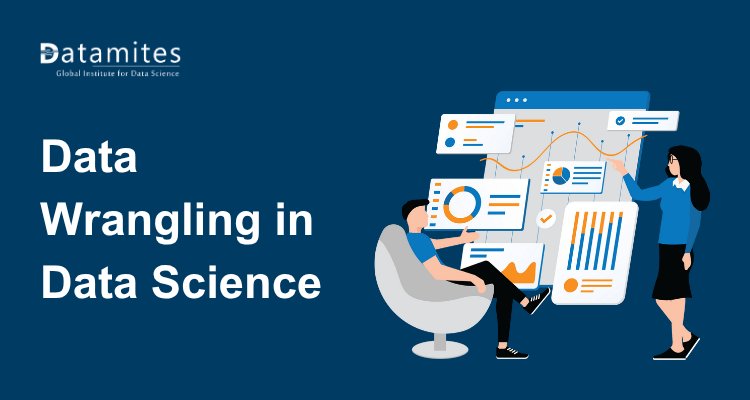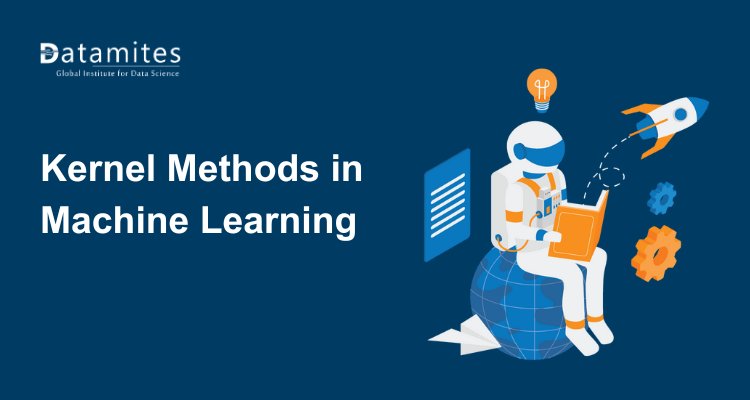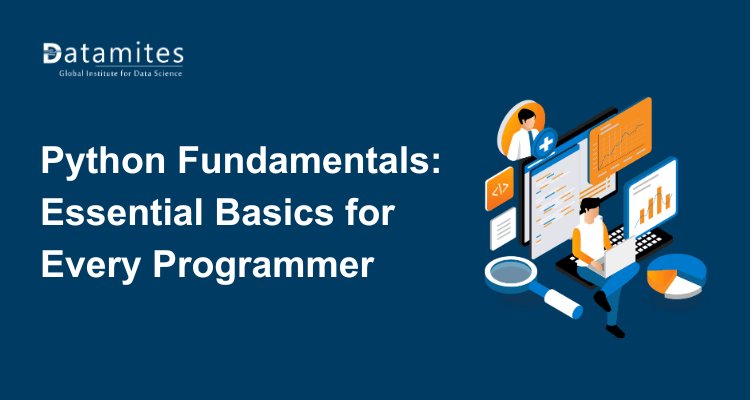Mastering Data Wrangling in Data Science: Techniques and Best Practices
This blog explores essential data wrangling techniques that transform raw data into clean, structured formats for analysis. It also highlights best practices to ensure efficiency, accuracy, and reproducibility in data preprocessing.

Data is the lifeblood of modern decision-making, powering everything from business strategies and product development to customer experience optimization. However, raw data is rarely clean, complete, or analysis-ready. This is where data wrangling comes into play. It’s the process of cleaning, transforming, and organizing data into a usable format, and it’s a critical skill for aspiring data scientists. Regardless of whether you're learning through an online course or attending an offline data science program, mastering data wrangling is typically one of the very first steps in the journey.
As industries increasingly rely on data-driven decisions, the importance of data wrangling has grown significantly. According to Grand View Research, the global data wrangling market was valued at USD 3.59 billion in 2024 and is projected to reach USD 10.32 billion by 2033, growing at a CAGR of 12.0% from 2025 to 2033. This substantial growth reflects how essential clean, well-structured data has become to fields such as machine learning, business intelligence, and predictive analytics.
This blog delves deep into the world of data wrangling in data science, unpacking its core stages, techniques, tools, and best practices, while also highlighting common pitfalls to avoid. You’ll discover how effective data wrangling enhances the accuracy and efficiency of analysis and model-building. By the end, you’ll have a practical roadmap to mastering data wrangling and applying it confidently in real-world data science projects..
What is Data Wrangling?
Data wrangling, also referred to as data munging or data preprocessing, is the process of cleaning, structuring, and enriching raw data into a desired format for better decision-making in analytics or machine learning.
It's the bridge between messy real-world data and meaningful insights. Every aspiring analyst or data scientist must learn these data wrangling techniques to work effectively with various data types and sources.
For those considering a data science career, learning to wrangle data is as vital as learning statistics or machine learning algorithms. It's no surprise that top data science institutes emphasize this skill early in their curriculum.
Key Stages of the Data Wrangling Process
A systematic approach to data wrangling ensures accuracy, reproducibility, and scalability. Let’s walk through the key steps in data wrangling:
Data Collection and Acquisition
At this stage, you gather raw data from various sources such as APIs, web scraping, databases, spreadsheets, and cloud storage. Tools like Python (with requests, beautifulsoup4), SQL, and even platforms like Google Sheets are widely used.
Data Discovery and Profiling
Before cleaning, it’s crucial to understand your data. Profiling includes analyzing distributions, identifying nulls, and checking for schema inconsistencies. Tools: Pandas Profiling, Dask, DataRobot, and OpenRefine.
Data Cleaning and Validation
This step involves correcting errors, removing null values, and validating data types. Clean data improves model performance and reliability. This is a core part of any data science course.
Data Transformation and Enrichment
Here, you manipulate data into the format needed for analysis or machine learning. This might involve merging datasets, feature creation, or deriving new metrics, core data wrangling techniques.
Data Structuring and Formatting
Depending on the analysis tools, data must be structured accordingly, wide format for Excel, tidy format for machine learning. Python’s Pandas, R’s tidyr, and tools like dbt can assist here.
Data Storage and Delivery
Finally, you store cleaned datasets for downstream consumption. Storage may be in CSVs, databases, cloud services, or as APIs. SQL, BigQuery, and Snowflake are among the data science tools used at this stage.
Refer to these articles:
- Ethical Challenges in Data Science 2025: A Practical Guide
- How To Become A Data Scientist?
- The Role of Data Science in Cyber Security
Essential Data Wrangling Techniques Every Analyst Should Know
Here are critical data wrangling tips for data scientists and analysts:
- Handling Missing and Null Values Effectively: Impute using mean/median, forward fill, or remove rows entirely depending on the context. This step is covered deeply in every best data science institute curriculum.
- Managing Inconsistent Data Types and Formats: Convert columns to appropriate types, date fields, numeric values, and categorical data. Mistyped data is a silent killer in analytics.
- Dealing with Duplicate Records: Use de-duplication techniques with .drop_duplicates() in Pandas or DISTINCT in SQL. Duplicate data leads to skewed insights.
- Encoding Categorical Data: For modeling, encode strings to numbers using Label Encoding or One-Hot Encoding. This step is crucial in any data science training program.
- Detecting and Correcting Outliers: Use visualization tools or statistical methods like Z-score and IQR to manage outliers. They can distort models significantly.
- Data Normalization and Standardization: Apply transformations such as Min-Max scaling or Z-score normalization for consistent input distributions in machine learning.
- Feature Engineering Basics for Wrangling: Create new variables by combining or transforming existing features. Good features often make or break a model.
By mastering these techniques, you’re developing key data science skills that are highly sought-after across industries.
Best Practices for Scalable and Reproducible Data Wrangling
To be effective in the long run, adopt these best practices for data wrangling:
- Write Modular and Reusable Code: Break tasks into functions and classes. It enhances readability and reusability.
- Keep Transformation Pipelines Transparent: Use frameworks like Scikit-learn Pipelines or Prefect to log each step. Transparency matters in enterprise data workflows.
- Use Version Control with Jupyter Notebooks: Git is indispensable for tracking changes and collaborating, especially in projects taught at a leading data science institute.
- Profile Data Before and After Wrangling: Tools like Pandas Profiling or Great Expectations help measure changes, reducing the chance of unnoticed errors.
- Leverage Logging and Error Tracking: Python’s logging module or services like Sentry help monitor scripts in production environments.
- Automate Repetitive Tasks: Tools like Airflow, cron jobs, or reusable scripts in Python streamline recurring wrangling jobs.
These practices are core to building scalable data pipelines, an essential competency in the future of data science.
Refer to these articles:
- Why Do You Need Data Science for Business
- Getting Started with Python for Data Science
- Top 10 Data Mining Tools Every Data Scientist Should Know
Real-World Applications of Data Wrangling
Applications of data science are everywhere finance, healthcare, retail, logistics, and beyond. And behind every successful model is a robust data wrangling process. Some examples:
Healthcare Analytics
Healthcare data from EHRs, lab reports, and wearables is often unstructured. Data wrangling helps standardize patient details, merge hospital records, and fill data gaps for accurate diagnosis.
Example: Hospitals use wrangled data to predict readmissions and monitor disease spread.
Financial Fraud Detection
Banks wrangle transaction data to ensure format consistency, detect duplicates, and identify fraud patterns.
Example: Clean financial data supports machine learning models that detect fraudulent credit card use.
E-Commerce Personalization
Retailers wrangle behavioral data, like browsing and purchases, to create tailored user experiences and fix missing or incorrect order data.
Example: Amazon uses cleaned data to recommend products based on user behavior.
Marketing and Customer Analytics
Marketing teams wrangle CRM, social, and email data to clean contacts, unify sources, and segment audiences for personalized campaigns.
Example: Marketers use wrangled data to track multi-channel ROI and improve targeting.
Transportation and Logistics Optimization
Logistics companies wrangle GPS logs and delivery data to streamline routes, correct timestamps, and harmonize vehicle IDs.
Example: FedEx and UPS use wrangled data to reduce costs and optimize delivery times.
Government and Public Policy
Government agencies wrangle population, tax, and regional data to eliminate duplicates, merge sources, and plan public initiatives.
Example: Clean census data supports more accurate funding allocation and regional planning.
Education and Learning Analytics
Educational institutions and EdTech platforms wrangle academic data to monitor performance, unify online activity, and enhance personalized learning.
Example: Cleaned data enables platforms to recommend learning content suited to each student.
Media and Entertainment
Streaming platforms wrangle user feedback and metadata to clean viewership logs, organize content, and improve recommendations.
Example: Netflix uses wrangled data to decide what content to produce based on user preferences.
In each of these cases, the scope of data science depends heavily on well-prepared data. This is why data wrangling in data science is a non-negotiable skill.
Refer to these articles:
Mastering data wrangling techniques is a crucial step for anyone pursuing a career in data science. Clean, well-structured data is the foundation of accurate analysis and successful modeling, which is why top data science institutes emphasize data preparation in their programs. As the demand for data science professionals grows, strong wrangling skills can give you a competitive edge.
Whether you're enrolled in an offline data science course in Chennai or learning online, developing proficiency in handling missing values, correcting inconsistencies, and automating workflows is essential. If you're exploring how to become a data scientist or upgrading your data science skills, remember: effective wrangling is where reliable insights begin.
Among the premier institutions shaping the future of data science education, DataMites Institute has established itself as a leading choice for aspiring data scientists. Recognized by TechGig as one of the top AI and Data Science institutes in India, DataMites is distinguished by its industry-relevant curriculum, hands-on training methodology, and practical internship opportunities that bridge the gap between learning and real-world application.
The institute offers Certified Data Scientist programs accredited by both IABAC and NASSCOM FutureSkills, ensuring that learners gain in-depth exposure to essential data science tools, machine learning techniques, and advanced analytics, all highly sought-after skills in today’s data-driven industries.
For learners who prefer a classroom setting, DataMites provides offline data science training in Bangalore, Hyderabad, Chennai, Pune, Ahmedabad, Coimbatore, and Mumbai. Additionally, their flexible online data science courses serve a global audience, making high-quality education accessible to professionals and beginners alike.
Whether you're just beginning your journey or seeking to enhance your expertise, DataMites equips you with the practical skills and industry credentials necessary to thrive in a competitive data science career.





